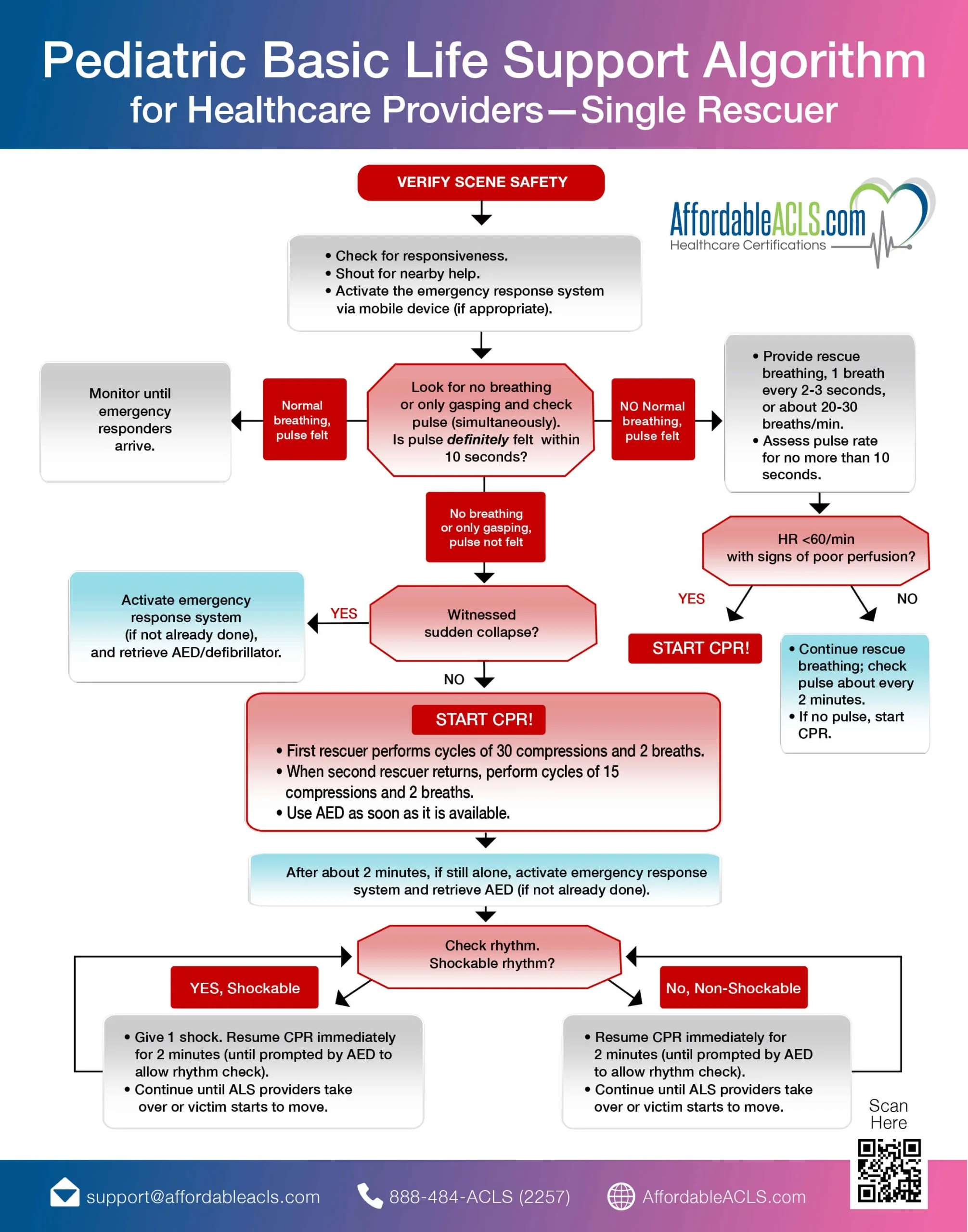Pediatric Basic Life Support (BLS) Algorithm – 1 Rescuer
The Pediatric Basic Life Support algorithm provides a structured approach for responding to cardiac or respiratory emergencies in children when only one rescuer is available. It emphasizes scene safety, rapid assessment, high-quality CPR, ventilation, AED use, and timely activation of emergency medical services (EMS).
Step-by-Step Guide:
1. Ensure Scene Safety
- Before approaching the child, confirm the environment is safe for both the rescuer and the victim.
2. Check for Responsiveness
- Gently tap and shout: “Are you okay?”
- If the child is unresponsive, shout for help and activate EMS immediately. If available, get an AED.
3. Assess Breathing and Pulse
- Look for normal breathing (not gasping) for no more than 10 seconds.
- Check for a carotid or femoral pulse.
4. If the Child Is:
- Breathing with a Pulse:
Stay with the child, monitor condition, and wait for EMS. - Not Breathing but Has a Pulse:
- Provide rescue breaths: 1 breath every 2–3 seconds (20–30 breaths per minute).
- Reassess pulse every 2 minutes.
- Begin chest compressions if the pulse drops below 60 beats per minute with signs of poor perfusion (e.g., weak pulses, cyanosis).
- Not Breathing and No Pulse:
- Start CPR immediately.
- For a single rescuer: perform 30 compressions followed by 2 rescue breaths.
- If a second rescuer becomes available: switch to 15 compressions and 2 breaths.
- Use an AED as soon as it becomes available.
5. AED Use
- Once the AED arrives, turn it on and follow the prompts.
- If a shockable rhythm is detected:
- Deliver 1 shock.
- Immediately resume CPR (starting with compressions) for 2 minutes.
- If no shockable rhythm is detected:
- Resume CPR immediately for 2 minutes.
- Reassess the rhythm every 2 minutes and continue cycles of CPR and rhythm analysis.
6. Continue Until:
- Advanced life support (ALS) providers take over.
- The child shows signs of life (e.g., movement, normal breathing).
- You are too exhausted to continue.
